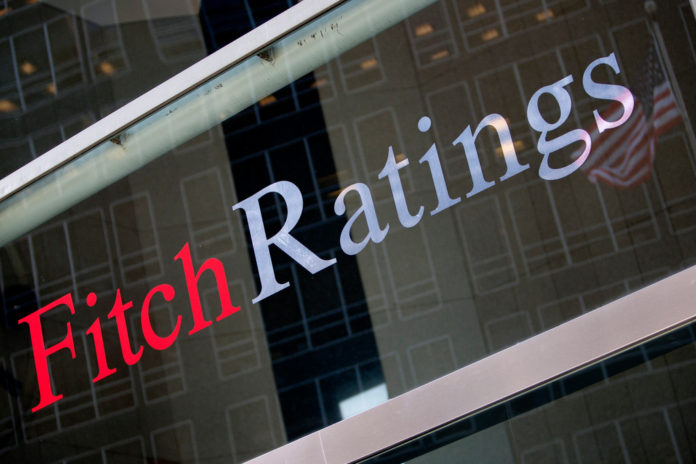
NEW YORK – Fitch Ratings said the temporary suspension of the U.S. debt limit removes the near-term risk to the nation’s AAA credit rating.
Agreement on a credible medium-term deficit reduction plan consistent with sustaining the economic recovery would likely result in the affirmation of the rating and revision of the outlook to stable from negative, Fitch said in a statement. In the absence of such a plan, the negative outlook would likely be resolved with a downgrade later in 2013.
Fitch had previously said that failure to increase the debt ceiling in a timely manner would prompt a review of the U.S. sovereign rating. Congress broke an impasse on Jan. 2 on how to avert the so-called fiscal cliff by passing legislation skirting income-tax increases for more than 99 percent of households. The U.S. House of Representatives voted on Jan. 23 to temporarily suspend the nation’s borrowing limit,, removing the issue for now as a tool for seeking deeper spending cuts.
“This is definitely helpful for market sentiment,” Sireen Harajli, a foreign-exchange strategist in New York at Credit Agricole SA, said in a telephone interview. “It seems that markets are looking for a decent gain.”
Treasury benchmark 10-year yields rose to 2 percent for the first time since April as signs of improvement in the global economy cut demand for the relative safety of U.S. debt.
S&P downgrade
Moody’s Investors Service put the U.S.’s credit rating under review with a negative outlook in August 2011, when the U.S. pushed back a decision on spending and raised its so-called the debt ceiling after months of political wrangling. Standard & Poor’s cut its rating to AA+ that month, blaming the nation’s political process.
Yields on 10-year Treasuries have fallen from 2.56 percent since the S&P downgrade and touched a record low 1.38 percent on July 25, 2012. The U.S. Dollar Index has gained about 7 percent in that span.
The debt-limit legislation is slated to be taken up by the Senate, where Majority Leader Harry Reid said lawmakers will pass the bill unchanged and send it to President Barack Obama. White House spokesman Jay Carney last week said at a briefing that the administration still prefers a long-term extension of the nation’s debt ceiling, while adding that Obama “would not stand in the way” if Congress passes the proposal.
House plan
The House debt-ceiling plan, which passed 285-144 and would lift the government’s $16.4 trillion borrowing limit until May 19, includes a provision designed to prompt lawmakers to address the federal budget. The House and the Senate each must adopt a budget resolution under the plan for the next fiscal year by April 15. If not, the pay for members of the chamber that doesn’t act will be withheld and placed in an escrow account until they adopt one — or, at the latest, until the end of the 113th Congress.
Obama signed legislation on Jan. 2 that, in addition to raising tax rates on the highest earners while sparing others, delayed for two-months the automatic spending cuts, known as sequestration, that would affect sectors such as defense that were set to take place Jan. 1. The combined tax increase and spending cuts would have been valued at over $600 billion, enough to bring the U.S. economy into a recession according to the Congressional Budget Office.
‘Strengthen confidence’
“The passage of a fiscal year 2014 budget resolution through Congress and a corresponding increase in the debt limit would strengthen confidence in the fiscal framework and provide a platform for putting in place a longer-term deficit reduction plan,” London-based Fitch analyst David Riley wrote in the note today. “Avoiding a government ‘shutdown’ requires Congress to pass a continuing resolution on March 27 and the deferred spending sequester comes into effect on March 1. Failure to reach timely agreement on these would not prompt an immediate review of the U.S. sovereign rating, though it would undermine confidence in the prospects for reaching agreement this year on a credible deficit reduction plan necessary to forestall a downgrade of the U.S. rating.”
On March 1, the across-the-board spending cuts that were originally scheduled to begin in January are set to take effect. And on March 27, current funding for the government expires, potentially setting up a government shutdown.












